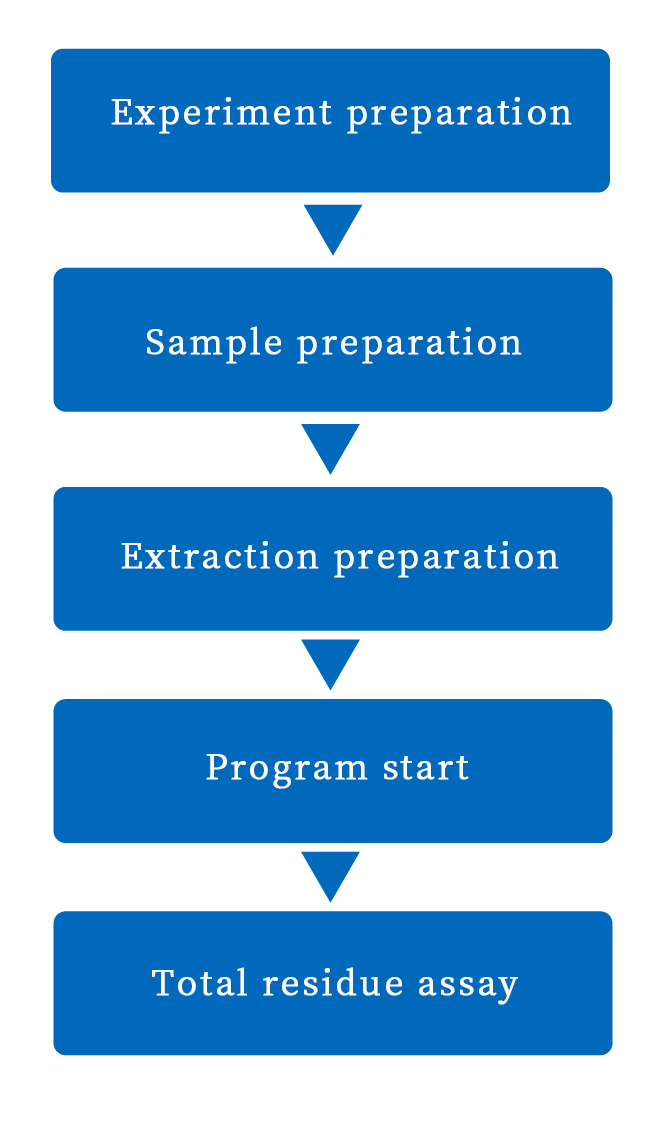Recombinant protein drugs, antibody drugs, vaccines and other products in biologics are produced using successive passages of cell line expression, and although they undergo a rigorous purification process, there may still be residual DNA fragments (rDNA) from the host cells in the product. These rDNA may affect the function of key genes of the receptor, thus posing an infectious or tumorigenic risk. It is therefore particularly important to obtain trace amounts of rDNA in samples in an efficient and stable manner, and the following methods are currently available.
|
Methodology |
Advantages |
Disadvantages |
|
Phenol/chloroform |
High DNA purity and content |
Time consuming, tedious steps and toxic |
|
Sodium iodide precipitation |
Simple operation |
Time consuming, DNA content unstable |
|
Column extraction |
Simple, high purity |
Time-consuming, not easy to automate |
|
Magnetic bead method |
Simple, high purity, can be automated |
/ |
This solution is based on the principle of magnetic bead method for rDNA pre-processing system in biological products, which can realize efficient, simple and automated pre-processing system. dscientz fully automatic nucleic acid extractor with the well-known brand of host cell residue DNA sample pre-processing kit (magnetic bead method), the recovery rate of all kinds of samples is stable and high above 80%, which can be stable and effective for the monitoring of host cell DNA residue in various biological products. DNA residues in biological products can be monitored.
Experimental protocol
Experimental materials: Automatic nucleic acid extractor (NP-2032), fluorescence quantitative PCR instrument (LightCycler480), host cell residual DNA sample pretreatment kit (magnetic bead method), CAR/TCR gene copy number detection kit (multiplex PCR-fluorescent probe method)
Experimental samples: retrovirus samples, CAR-T cell samples, negative control.
Experimental steps.

Note: The instrument runs for about 30min.
Experimental results
|
Sample name |
MeanCp |
MeanConc |
Recovery amount |
Spiked amount |
Recovery rate |
|
Negative control |
36.43 |
0.00 |
- |
- |
- |
|
Negative control+(portable) |
18.67 |
86.62 |
8662.15 |
9707.85 |
89% |
|
Negative control+ |
18.72 |
53.47 |
8020.723657 |
9868.821045 |
81% |
|
Virus samples+ |
19.15 |
63.10 |
8194.27 |
9707.85 |
84% |
|
Cell samples+ |
20.21 |
32.93 |
2811.241943 |
2740.516576 |
102% |
Experimental conclusions
Automated processing of different samples has stable and efficient results.
higher efficiency of batch processing automation than manual extraction.
Meet the new USP recovery requirements; can be a powerful assistant for pre-treatment of rDNA assay in biological products.

Fast and efficient
The purity of purified nucleic acid can meet the needs of various downstream experiments.
Nucleic acid recovery >95%, magnetic bead recovery >98%.
Total 20-40min to complete 32 samples. (depending on reagents)
Highly versatile
Multi-speed and multi-module options, and 100 programs can be stored to meet different customer needs.
Customized lysis and elution temperature.
Suitable for different samples, such as animal tissues, serum, plasma, etc.
Safe and reliable
Fully automated operation with disposable consumables to reduce human contact.
Built-in UV disinfection at regular intervals for efficient cleaning.
Exhaust fan, effectively avoid aerosol contamination.
Anti-opening alarm during operation to ensure operational safety.
Flexible operation and control
Large screen full-color display, touch operation, easy to use.
Define shortcut program, one key start.
Humanized observation window, display design, easy to operate.
Post time: Mar-23-2023





